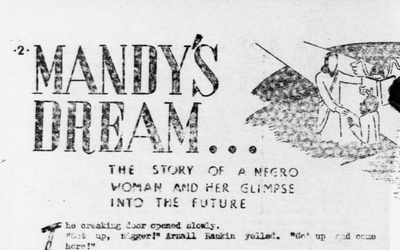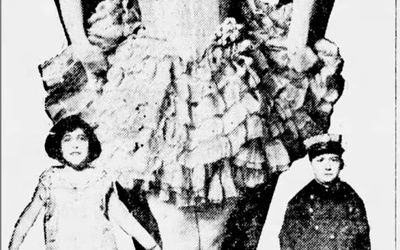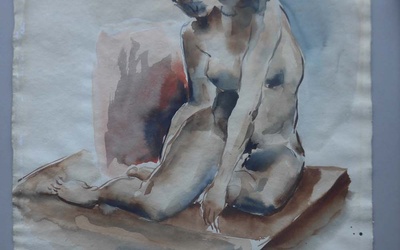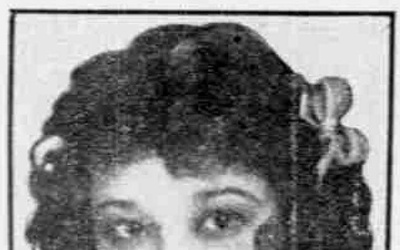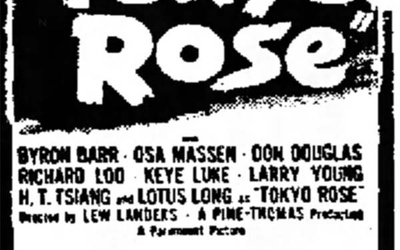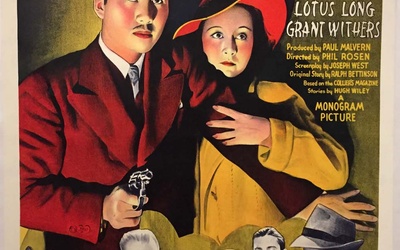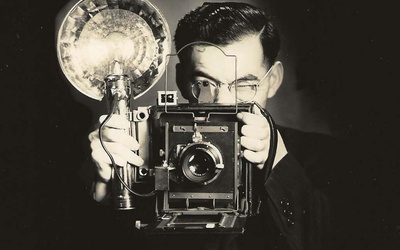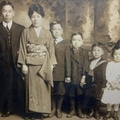
Greg Robinson
@GregGreg Robinson, a native New Yorker, is Professor of History at l'Université du Québec À Montréal, a French-language institution in Montreal, Canada. He is the author of the books By Order of the President: FDR and the Internment of Japanese Americans (Harvard University Press, 2001), A Tragedy of Democracy; Japanese Confinement in North America (Columbia University Press, 2009), After Camp: Portraits in Postwar Japanese Life and Politics (University of California Press, 2012), Pacific Citizens: Larry and Guyo Tajiri and Japanese American Journalism in the World War II Era (University of Illinois Press, 2012), and The Great Unknown: Japanese American Sketches (University Press of Colorado, 2016), as well as coeditor of the anthology Miné Okubo: Following Her Own Road (University of Washington Press, 2008). Robinson is also coeditor of the volume John Okada - The Life & Rediscovered Work of the Author of No-No Boy (University of Washington Press, 2018).
His historical column “The Great Unknown and the Unknown Great,” is a well-known feature of the Nichi Bei Weekly newspaper. Robinson’s latest book is an anthology of his Nichi Bei columns and stories published on Discover Nikkei, The Unsung Great: Portraits of Extraordinary Japanese Americans (University of Washington Press, 2020). It was recognized with an Association for Asian American Studies Book Award for Outstanding Achievement in History Honorable Mention in 2022. He can be reached at robinson.greg@uqam.ca.
Updated March 2022
Stories from This Author
African American images on a Nikkei Canvas: Black Characters in Japanese American Literature - Part 2
Jan. 30, 2022 • Greg Robinson , Brian Niiya
Read Part 1 >> The coming of World War II and the mass confinement of West Coast Japanese Americans under Executive Order 9066 shuttered the community press. Literary activity did continue, to a limited extent, within the WRA camps, where inmates published stories and poems in camp newspapers and in reviews such as TREK at the Topaz camp. Except at Poston, which had a handful of black staffers, and in some areas near the Arkansas camps, confined Japanese Americans had …
African American images on a Nikkei Canvas: Black Characters in Japanese American Literature - Part 1
Jan. 23, 2022 • Greg Robinson , Brian Niiya
It is a commonplace that the presence and contributions of racial minorities have been too long and thoroughly erased from the writing of America’s history. Yet, as the eminent historian Arthur Schlesinger, Jr. once observed, if racial conflict has remained excluded from the nation’s consciousness, as expressed by the writing of history, then the repressed has returned in its unconscious, as represented by literature—classic American works by Twain, Melville and others are awash in feelings, fantasies and fears over racial …
Ruth Sato Reinhardt: From Chorus Girl to Jazz Momma - Part 2
Jan. 11, 2022 • Greg Robinson
Read Part 1 >> After 1940, Ruth Sato’s life was transformed, and she shifted her career from showgirl to more serious pursuits. It must be said that she had always had artistic and intellectual interests. During the 1930s, she dated writer John O’Hara, with whom she discussed literature. DownBeat magazine reported in 1939 that Sato was a “hep chick” and jazz enthusiast, who had a major record collection and knew all the members of the major swing bands. In September …
Ruth Sato Reinhardt: From Chorus Girl to Jazz Momma - Part 1
Jan. 10, 2022 • Greg Robinson
Recently I did a column for Discover Nikkei on Marion Saki, the hapa Japanese American modern dancer and stage performer of the early 20th century. During the 1920s, Marion Saki achieved renown in musical shows on Broadway and on road tours, where she was able to play non-Asian roles even as she proclaimed her Japanese identity. With the coming of the Great Depression and the decline of vaudeville, her career went into eclipse. Yet even as Saki left the musical …
Hidden in Plain Sight: Rediscovering the Life and Art of Bumpei Usui
Dec. 17, 2021 • Greg Robinson
On my refrigerator is a magnet with a reproduction of a painting called 14th Street, a colorful, angular cityscape with a view dominated by a skyscraper. I found it some time ago at the shops of the Metropolitan Museum of Art in New York. At the time I bought the magnet, the name of the artist, Bumpei Usui, was unknown to me. I subsequently discovered that Usui was a prized member of the Nikkei artist community in 20th century New York: a master …
William Castle: An Exceptional Supporter of Japanese Americans
Nov. 30, 2021 • Greg Robinson
Some years ago, I had a chance to spend a month doing extended research in the rare books and manuscripts collections of the Houghton Library at Harvard University. It was there that I came across the typescript diaries of William R. Castle, a leading American diplomat and public figure, the entries of which provided me with quite interesting and instructive material on Castle’s ideas.1 William Richards Castle, Jr. was born to an elite American family in the kingdom of Hawaii—his …
The Enigma of Marion Saki
Nov. 16, 2021 • Greg Robinson
A wide selection of Nisei women made their mark as entertainers, in diverse eras and areas of show business: dance, concert halls, opera, theater, and cinema. Arguably the first female star, and surely the most mysterious, was the multitalented Marion Saki (sometimes known as Marian Saki), a ballerina turned Broadway song and dance star of the 1920s, who reinvented herself as a club and concert singer in the 1930s. When it comes to Saki’s origins and background, nothing is entirely clear. …
Tokyo Rose: The Making of a Hollywood Myth
Nov. 1, 2021 • Greg Robinson
During the latter stages of World War II, Hollywood studios produced a number of war movies dealing with Japan, including Destination Tokyo (1943), starring Cary Grant; Thirty Seconds Over Tokyo (1944), with Spencer Tracy; and James Cagney’s Blood on the Sun (1945). These films, generally dismissed as wartime propaganda, have been all but forgotten in cinema history. Yet one of them, the 1946 potboiler Tokyo Rose, deserves some attention for its part in Japanese American history. The project that resulted in Tokyo Rose started life in summer 1945, as …
Lotus Long: The Short Career of a Screen Siren
Oct. 25, 2021 • Greg Robinson
Ryan Murphy’s recent Netflix miniseries Hollywood uses counterfactual history to tell some real-life stories of Hollywood. Among them is the sad tale of Anna May Wong (played by Michelle Krusiec), the brilliant film actress of the 1930s who faced typecasting due to her Asian ancestry. Relegated to stereotypical “dragon lady” roles, Wong was shut out of more worthy parts, notably the screen adaptation of Pearl S. Buck’s Chinese novel The Good Earth, in favor of white actors in yellowface. However, …
Toge Fujihira: Master Photographer and World Traveler - Part 2
Sept. 28, 2021 • Greg Robinson , Jonathan van Harmelen
Read Part 1 >> Even as Fujihira and Shilin made their documentaries on Native Americans, they also collaborated on a series of films for the Protestant Film Commission. In 1951, Fujihira travelled to Brazil to shoot a film on Church missionary work there. The following year, they released An End to Darkness, a nondenominational film about a Liberian boy’s struggle for a Christian education and his desire to return home and serve his people. Similarly, Challenge in the Sun (1952) …

